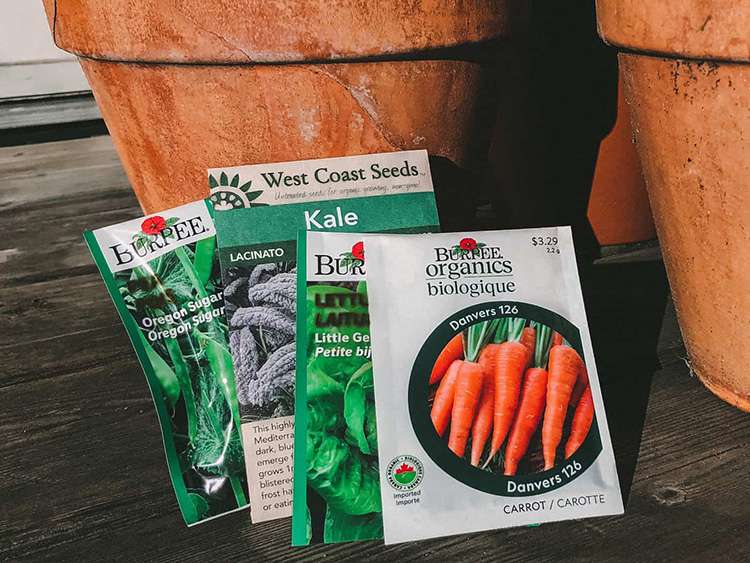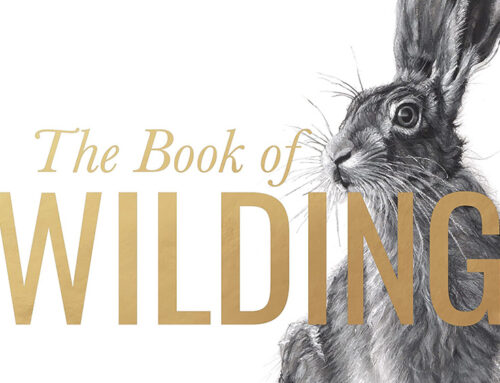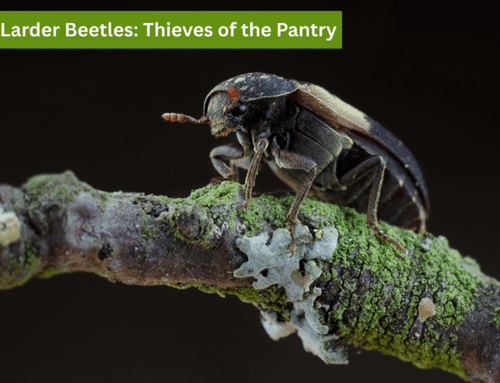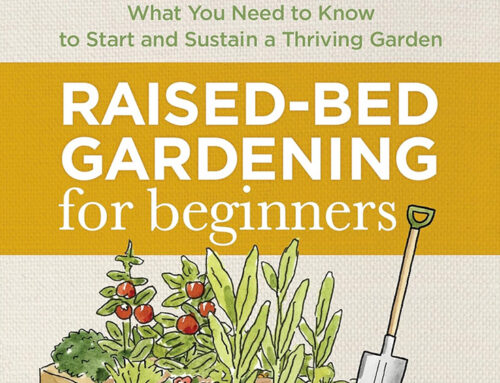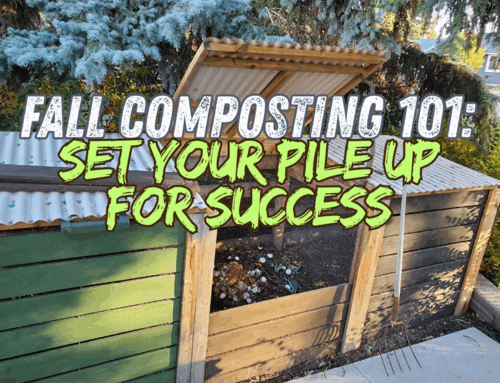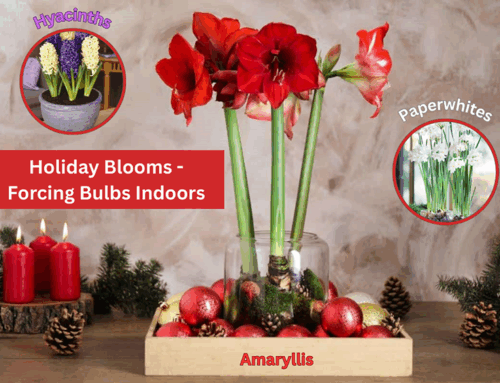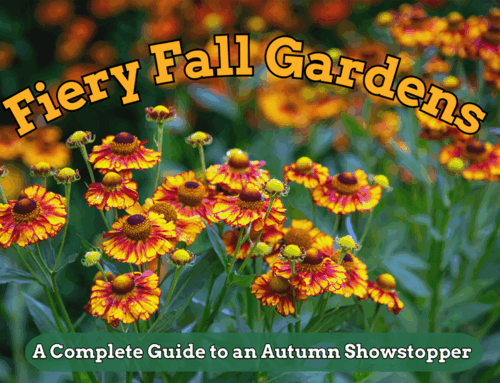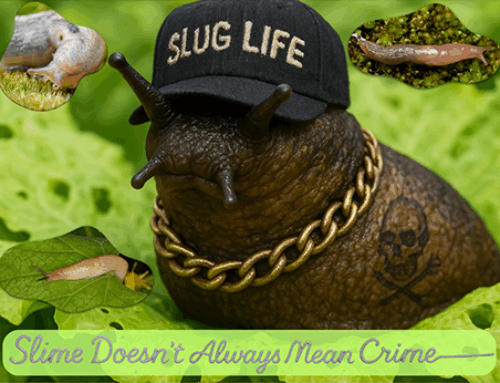February Gardening Chores
by Brett Kerley
February in Edmonton is a time of preparation and anticipation. While the weather remains cold and the ground often frozen, there are plenty of tasks to keep gardeners busy. Here are some essential February garden chores.
Plan Your Garden
Start by reviewing last year’s garden journal. Reflect on what worked well and what didn’t to make improvements. By now most companies have their seed catalogues out, so browse through and order your seeds and plants. Ensure you have everything you need before popular varieties sell out. Each year I like to challenge myself by growing something that I haven’t before, maybe a different variety or you could push the boat out and go for a different plant altogether! Sketch your garden layout. Consider crop rotation to maintain soil health and plan companion planting for pest control.
When you’ve purchased your seed packets, read the instructions carefully. Many need to be started indoors. Set up a grow space and use seed trays, quality seed-starting mix, and grow lights to give seedlings the best start. You can begin sowing seeds for plants like onions, leeks, and early brassicas (cabbage, broccoli, cauliflower). Maintain a temperature of 18-24°C (65-75°F) and ensure adequate moisture. When you gain some confidence, try out more high-yielding plants. Planting fewer plants with higher yields allows you to reap a plentiful harvest without taking up too much space indoors.
Inspect and Maintain Tools and Structures
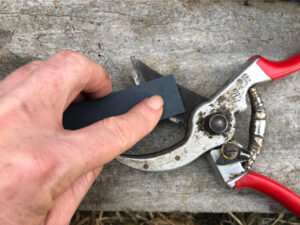 Spring will be here before you know it so in this quieter gardening month you can sharpen your tools and make sure they’re clean and ready to go. Ensure the mechanisms on your pruners, shovels, and hoes are in good working order. This means oiling moving parts. This will also prevent rust and keep tools functioning smoothly. Check your inventory of supplies like gloves, stakes, twine, and other essentials.
Spring will be here before you know it so in this quieter gardening month you can sharpen your tools and make sure they’re clean and ready to go. Ensure the mechanisms on your pruners, shovels, and hoes are in good working order. This means oiling moving parts. This will also prevent rust and keep tools functioning smoothly. Check your inventory of supplies like gloves, stakes, twine, and other essentials.
Winterize garden structures like greenhouses to ensure they remain functional and protected during colder months. Here’s how you can adapt each of the inspection items for winter preparation:
● Frame: Reinforce weak joints or supports to handle potential snow loads or strong winds.
● Connections: Tighten all bolts and screws. Add braces or supports if your region experiences heavy snow.
● Glass Panels: Replace cracked or damaged panes to prevent heat loss.
● Polycarbonate or Plastic Sheeting: Patch or replace any tears. Consider adding an extra layer for insulation.
● Seals: Reapply or replace weather-stripping or caulking to prevent cold drafts.
● Fans and Louvers: Ensure ventilation systems are clean and operational but consider reducing airflow during extreme cold to retain heat.
● Automatic Vent Openers: Adjust or deactivate systems if they could over-ventilate and let in too much cold air.
● Rodent Activity: Seal gaps and set traps if rodents are a concern.
For the Birds
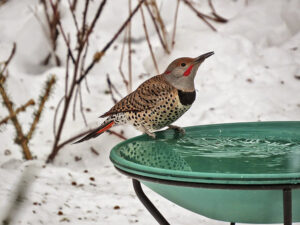 Proper maintenance of bird feeders and bird boxes during snowy winters ensures that birds can access food and shelter while keeping these items in good condition. Here are some tips:
Proper maintenance of bird feeders and bird boxes during snowy winters ensures that birds can access food and shelter while keeping these items in good condition. Here are some tips:
Bird Feeders
- Keep Feeders Full: Birds need extra energy to stay warm in winter, so ensure feeders are consistently stocked with high-calorie foods like black-oil sunflower seeds, suet, and peanuts.
- Prevent Ice and Snow Buildup: Use feeders with roofs or weather guards to minimize snow accumulation. Brush off snow regularly to keep feeding ports accessible.
- Use a Heated Bird Bath: Install a heated bird bath or a heated base for feeders to prevent water from freezing and to offer a water source. I purchased a heated dog bowl from Princess Auto, threw in some small stones so it’s not too deep and it works great. WBU also has some very nice looking heated water baths.
- Clean Regularly: Empty feeders weekly and clean with warm, soapy water. Disinfect with a 10% bleach solution to prevent mold or disease. Dry thoroughly before refilling.
- Protect Feed from Moisture: Use weather-resistant feeders and add baffles to keep rain and snow off the seed. Store birdseed in a dry, sealed container to prevent spoilage.
- Clear Ground Below Feeders: Remove fallen seed and droppings to discourage pests and prevent moldy food buildup.
Bird Boxes
- Inspect and Clean Boxes: Before winter, clean out old nesting materials and debris to reduce pests and parasites, but if you’ve forgotten now is the time to get out and do it!
- Seal Gaps: Check for cracks or gaps that might let in cold drafts or snow. Patch them with non-toxic sealant.
- Add Insulation: Add straw or soft materials to help keep the box warm without overcrowding the space.
- Position for Protection: Ensure boxes face away from prevailing winds (usually facing southeast or east). Place them under eaves or use weather guards to shield from snow and rain.
- Provide Ventilation: Make sure ventilation holes are clear to prevent condensation, which could lead to freezing. I normally have a few holes drilled in the bottom for water to leave and a couple on the side for ventilation.
- Monitor for Damage: Periodically check for ice buildup or structural damage caused by heavy snow or wind.
Other Useful Tips
- Keep Pathways Clear: Shovel snow and clear paths to feeders and boxes to make maintenance safer and easier.
- Offer Additional Shelter: Consider providing roosting boxes or brush piles nearby for extra protection during storms.
- Stay Consistent: Birds may become reliant on your feeders during harsh winters, so maintain a steady food supply.
Regular maintenance ensures your backyard becomes a reliable haven for birds during the toughest months.
Care for Indoor Plants
Changes are happening for your indoor houseplants as well as your outdoor ones. Take time this February to repot your indoor plants. The sun is higher in the sky, and your indoor plants should be ready for growing strong. You do not need to get all new pots unless, of course, your indoor plants have outgrown their containers.
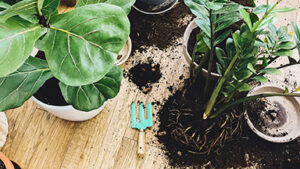 Repotting steps
Repotting steps
- Remove the houseplant from the pot.
- Shake off loose soil.
- Fill the pot with a new potting mix and reposition the plant.
- Add some organic slow-release fertilizer.
- Give plants a thorough watering. Consider a shower watering, which will clean the plant’s leaves and give the roots a good soaking.
- Allow the potted plants to drain water and set them in their sunny location.
Inspect all your houseplants for signs of fungus gnats, aphids, spider mites, or mealybugs.
Our homes get very dry during an Edmonton winter. Plants really benefit if you can increase the humidity to at least 40%. There are a few things you can do to increase humidity:
- Invest in a humidifier to combat the dry air to keep your houseplants healthy.
- Group your plants together so they moisturize the air for each other.
- A pebble tray under some or all of your plant pots also helps. To do this take a plastic or terracotta tray and fill it with a layer of pebbles. Partly fill the tray with water so the pebbles are sticking out of the top. Place a plant on top of the tray with the pebbles propping it up so it’s not sitting in water. As the water evaporates, it releases moisture into the air and give your plant a boost.
- Repurpose an old spray bottle, thoroughly wash it out and use it to mist down your plants on a daily basis.
By focusing on these February gardening chores, Edmonton gardeners can set the stage for a successful growing season. While spring may feel far away, every small task completed now brings it one step closer.
Happy gardening everyone!

